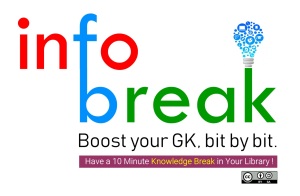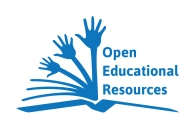The Seattle startup Intellectual Ventures is using computers to eradicate malaria—one mosquito at a time.

By Daniel Lyons | NEWSWEEK
Published Apr 9, 2010
From the magazine issue dated Apr 19, 2010
Philip Eckhoff and Karima Nigmatulina don’t need to be working in this drab concrete building tucked away in an office park in Bellevue, Wash., a place where cloudy days outnumber sunny ones and where the only perks are the once-a-week pizza lunch and free snacks from Costco. In fact, they could probably be working anywhere. Nigmatulina is 25 years old and already has a Ph.D. from MIT in operations research. Eckhoff, 27, has a Ph.D. in math from Princeton and was a Hertz Foundation fellow, an honor bestowed on the nation’s top graduate students in science and engineering. So why aren’t they making big bucks on Wall Street or down in Silicon Valley, trying to get rich at some startup?
The answer sounds corny, but it isn’t: they’re here because they want to do something important. The company they work for, Intellectual Ventures, is trying to develop a computer model that could help eradicate malaria, a disease that afflicts 300 million to 500 million people a year and kills 1 million of them, mostly children in Africa. When the company first reached out to Eckhoff in 2007, he didn’t have to think twice. "This was my dream job," he says. Eckhoff grew up in Haiti, the son of two doctors. He had malaria 15 times as a kid. At university he excelled in math and engineering, but, he says, "I always wanted to work on Third World disease eradication." Nigmatulina grew up in Siberia, and knew by the age of 6 that she would do something with mathematics. "But I also wanted to work on projects that make a difference," she says. "I wanted to have that whole experience of having the lightbulb go off—that’s cool—but what if that lightbulb can light an entire city? That’s really amazing." In part because she suffered from tuberculosis as a child, she was drawn in graduate school toward epidemiology, developing software for modeling the spread of influenza. Like Eckhoff, when she got the call from Intellectual Ventures, she leaped at the chance.
Intellectual Ventures is one of those companies that aren’t well known today but might be tomorrow, a place where people are working on the frontiers of technology and are not bothered in the least by the knowledge that whatever they’re doing might not work out. It’s one of the things I’ve always envied about tech pioneers like Eckhoff and Nigmatulina—they really seem to have no fear of failing. And, paradoxically, that fearlessness is what enables them to succeed. Cautious types like me find it intoxicating to be around them. Silicon Valley is crawling with these companies, many of them born during the recession (who says innovation is dead?) and all of them determined, in their own way, to do what Apple CEO Steve Jobs used to call "putting a dent in the universe." They’re reinventing videogames, creating new billion-dollar markets out of things like "virtual goods" that didn’t exist a few years ago; they’re building programs for new platforms, like Apple’s iPhone; they’re inventing new ways for people to stay in contact over the Web and using the wisdom of crowds to build vast public databases of information.
What sets Intellectual Ventures apart is the size and significance of what its researchers are trying to do—their work could end up saving millions of lives. The company has been around since 2000 and is run by Nathan Myhrvold, the former chief technology officer at Microsoft. The malaria research hasn’t yet resulted in a marketable product; much of the company’s business involves buying up patents and using them to generate licensing fees. It’s a practice that has made Myhrvold a hated man in some tech circles, where he’s been derided as a "patent troll." (It’s a description he disputes, saying that he merely helps inventors bring their creations to market.) But Intellectual Ventures is also in business to invent new ideas of its own, most notably in medical devices and nuclear power. A project called TerraPower is trying to develop a new kind of nuclear reactor.
In 2007 Bill Gates, who is a friend of Myhrvold’s and an investor in Intellectual Ventures, challenged the company to come up with ideas for eradicating malaria. That’s a problem Gates was tackling through his philanthropic organization, the Bill and Melinda Gates Foundation. "Come up with some good ideas," he told Myhrvold, "and I’ll come up with some money to pursue them." Myhrvold brought himself up to speed by attending conferences and poring through thousands of research papers on malaria. He came to believe that epidemiologists needed a computer model that could simulate malaria outbreaks and predict how effective various remedies (bed nets, insecticides, medicines) would be in any given location at any given time.
Myhrvold thought an approach called Monte Carlo modeling, which requires tremendous computing power and is used widely on Wall Street and in physics, might do the trick. So Intellectual Ventures built a supercomputer with 1,000 times the power of a desktop computer and recruited Eckhoff from Princeton to write the software. Nigmatulina joined in 2009, and together they have created a software model that can incorporate thousands of variables to run "what if" scenarios and simulate outbreaks of malaria on a computer. The idea is to help doctors choose which approaches to take in a given area, so they can use resources more wisely. Do bed nets work? If they do, why does the disease continue to spread even when a high percentage of people have nets? Researchers using the model were able to figure out how frequently the disease is spread by mosquitoes that bite people when they’re outside and not sleeping. The model even lets researchers see the effect of potential vaccines that don’t yet exist, so they can choose which one to develop. Better yet, the software can be applied not only to malaria but also to polio, HIV, and tuberculosis. "Our model," Myhrvold says, "will completely change the world of epidemiology."
But that computer model was only the beginning. Once the team got hooked on the idea of eradicating malaria, other researchers at Intellectual Ventures started dreaming up their own ideas—"taking crazy ideas and making them less crazy, so that they might work," Myhrvold says. One team is creating a kind of artificial food that mosquitoes prefer to human blood; that fake blood could be placed outside villages and draw mosquitoes away from humans. Another approach that has received lots of attention—it stole the show at this year’s TED conference, an annual event for the tech industry’s big thinkers—is a "photonic fence," which zaps mosquitoes with lasers. The idea for the fence sprang out of a weekly brainstorming session in which Lowell Wood, a physicist who worked on the Strategic Defense Initiative (a.k.a. the Star Wars missile-defense shield) at Lawrence Livermore Laboratory, suggested taking the same approach to mosquitoes. Everyone laughed. But Wood said he was serious—shooting mosquitoes from a distance of a few hundred feet would be way easier, in fact, than shooting missiles that are thousands of miles away. Intellectual Ventures spent months developing the software needed to identify, track, and zap mosquitoes as they flew through a beam of light. Today Intellectual Ventures has a prototype fence in operation at the lab, but it’s still not ready for deployment in Africa. The notion has, however, attracted the attention of companies that may license the idea to create a product that could protect orchards—and even suburban backyards—from pests.
Another team at Intellectual Ventures is trying to develop better tools for diagnosing malaria. Today doctors draw blood, which is stained with a chemical and examined under a microscope, usually at a lab. But that takes time, so often when a patient in Africa shows up with symptoms that look like malaria (fever, chills), doctors go ahead and give out antimalaria drugs. But that wide use of drugs, coupled with suboptimal doses, has created a new problem: drug-resistant strains of the parasite that causes malaria. So a team at Intellectual Ventures has developed a faster diagnostic tool that involves simply pricking a patient’s finger, staining a slide, and shining a laser into the sample. The laser detects tiny crystals of a substance called hemozoin, which is produced when the malaria parasite feeds on hemoglobin in the blood. The diagnosis takes seconds and could reduce the overuse of drugs. Researchers are also working on an even better tool that could detect malaria by shining a laser into the skin, without drawing even a drop of blood. And they believe they might eventually be able to use lasers not only to detect the presence of the malaria parasite, but to kill it, too.
Of all these ideas, the photonic fence is the one that has received the most attention—not all of it positive. Myhrvold’s demonstration at the TED conference prompted Bart G.J. Knols, a Dutch biologist who studies malaria and serves as managing director of Malaria World, an online network for malaria scientists, to publish an article slamming Myhrvold’s idea as impractical.
Myhrvold admits that a lot of this stuff sounds farfetched. He even admits that it may not work. "We’re taking some of the smartest people in First World technology, and instead of developing yet another gadget for rich people, we’re trying to do something that will change the lives of 300 million to 500 million people who get malaria, people who don’t usually have inventors working on their behalf," he says.
A cynic might say that Myhrvold doesn’t really care about malaria, that these projects exist merely as a public-relations smokescreen. Stick a few scientists in a lab, throw a few million bucks at malaria, and maybe people won’t get so upset about the billions you stand to make by squeezing companies with your giant patent portfolio. Who knows? But I’ve met Myhrvold, and I believe he’s sincere. The young scientists working for him are true believers. As crazy as their ideas may seem, they may yet succeed. How can you argue against trying?
© 2010
Courtesy: http://www.newsweek.com/id/236139
Filed under: Snippets





















































































